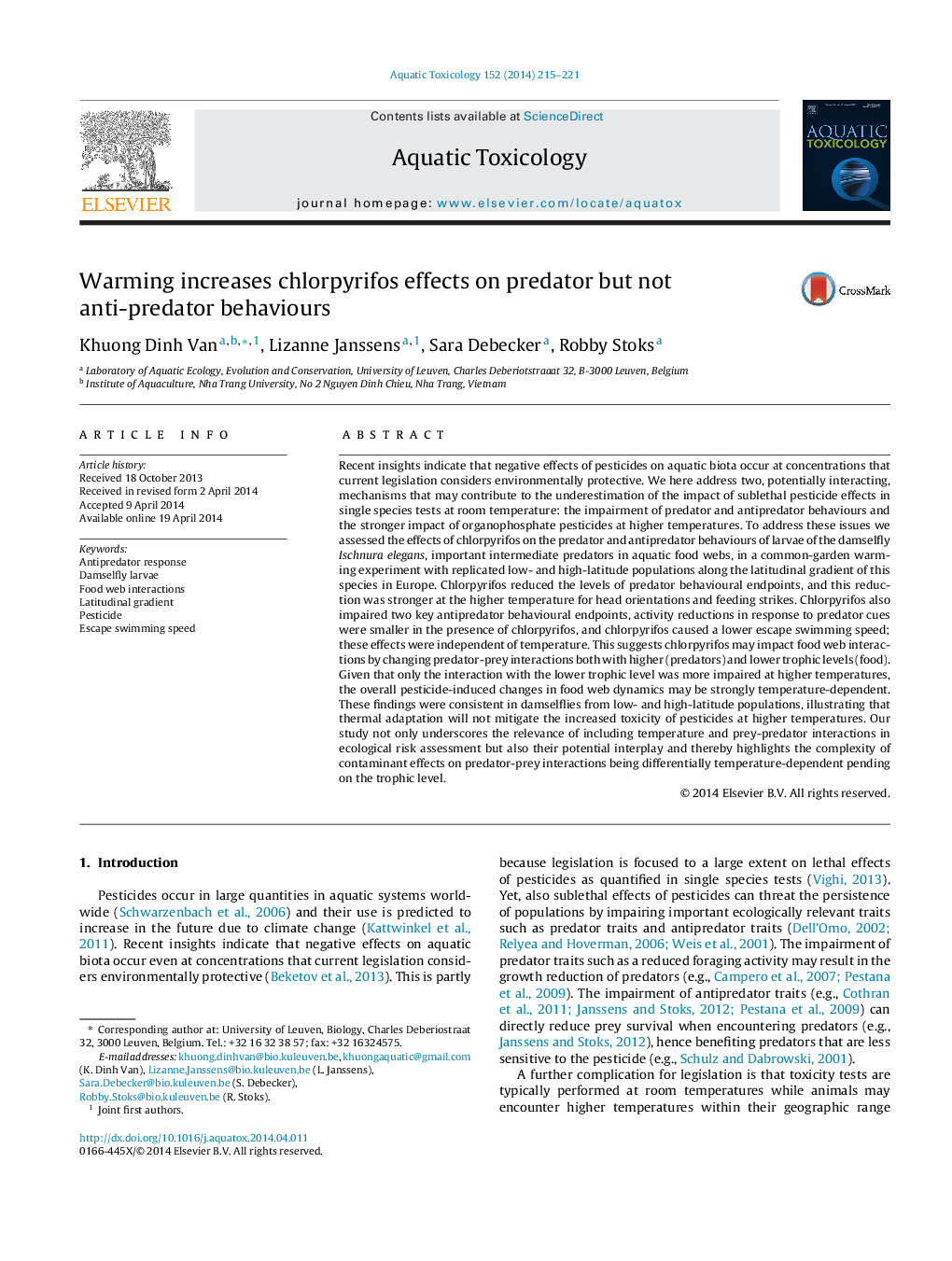| کد مقاله | کد نشریه | سال انتشار | مقاله انگلیسی | نسخه تمام متن |
|---|---|---|---|---|
| 6382398 | 1625953 | 2014 | 7 صفحه PDF | دانلود رایگان |
عنوان انگلیسی مقاله ISI
Warming increases chlorpyrifos effects on predator but not anti-predator behaviours
ترجمه فارسی عنوان
گرم شدن باعث افزایش اثرات کلرپریفیس بر روی شکارچیان، اما رفتار ضد خرچنگی نیست
دانلود مقاله + سفارش ترجمه
دانلود مقاله ISI انگلیسی
رایگان برای ایرانیان
کلمات کلیدی
موضوعات مرتبط
علوم زیستی و بیوفناوری
علوم کشاورزی و بیولوژیک
علوم آبزیان
چکیده انگلیسی
Recent insights indicate that negative effects of pesticides on aquatic biota occur at concentrations that current legislation considers environmentally protective. We here address two, potentially interacting, mechanisms that may contribute to the underestimation of the impact of sublethal pesticide effects in single species tests at room temperature: the impairment of predator and antipredator behaviours and the stronger impact of organophosphate pesticides at higher temperatures. To address these issues we assessed the effects of chlorpyrifos on the predator and antipredator behaviours of larvae of the damselfly Ischnura elegans, important intermediate predators in aquatic food webs, in a common-garden warming experiment with replicated low- and high-latitude populations along the latitudinal gradient of this species in Europe. Chlorpyrifos reduced the levels of predator behavioural endpoints, and this reduction was stronger at the higher temperature for head orientations and feeding strikes. Chlorpyrifos also impaired two key antipredator behavioural endpoints, activity reductions in response to predator cues were smaller in the presence of chlorpyrifos, and chlorpyrifos caused a lower escape swimming speed; these effects were independent of temperature. This suggests chlorpyrifos may impact food web interactions by changing predator-prey interactions both with higher (predators) and lower trophic levels (food). Given that only the interaction with the lower trophic level was more impaired at higher temperatures, the overall pesticide-induced changes in food web dynamics may be strongly temperature-dependent. These findings were consistent in damselflies from low- and high-latitude populations, illustrating that thermal adaptation will not mitigate the increased toxicity of pesticides at higher temperatures. Our study not only underscores the relevance of including temperature and prey-predator interactions in ecological risk assessment but also their potential interplay and thereby highlights the complexity of contaminant effects on predator-prey interactions being differentially temperature-dependent pending on the trophic level.
ناشر
Database: Elsevier - ScienceDirect (ساینس دایرکت)
Journal: Aquatic Toxicology - Volume 152, July 2014, Pages 215-221
Journal: Aquatic Toxicology - Volume 152, July 2014, Pages 215-221
نویسندگان
Khuong Dinh Van, Lizanne Janssens, Sara Debecker, Robby Stoks,
